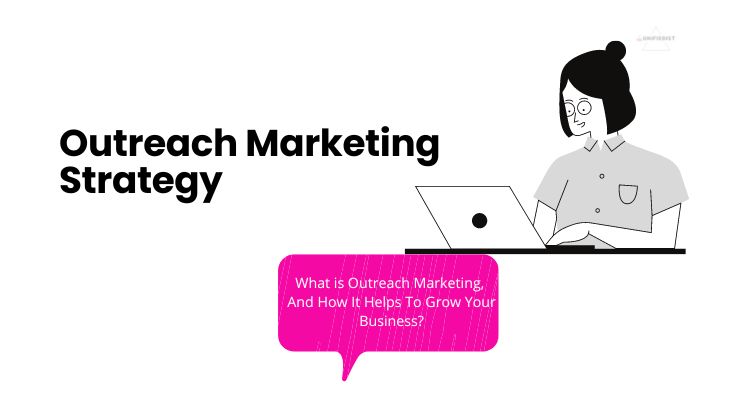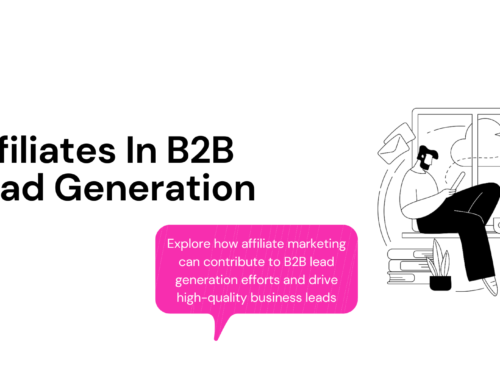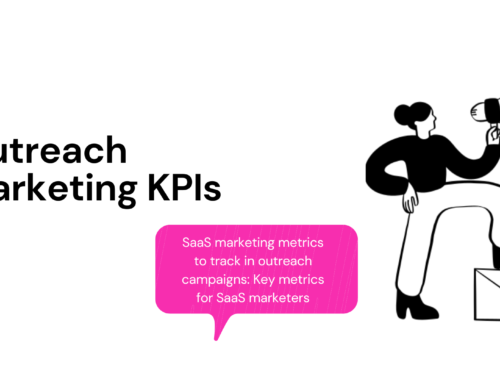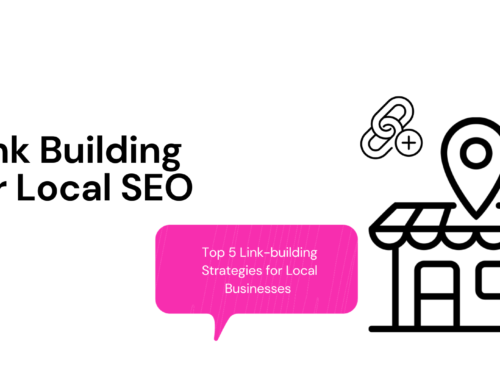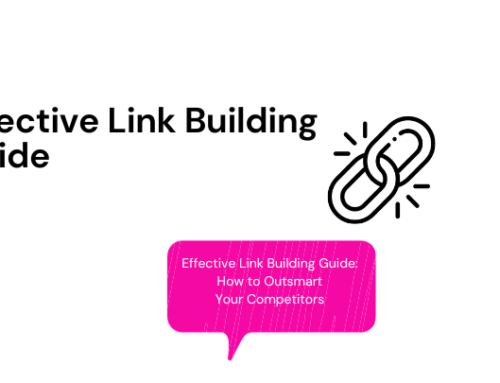Growing a business takes work, and it’s more challenging if you have a small business trying to make headway in your space. The foremost and ultimate goal is to take its products or services to as many individuals as possible.
For effective marketing, the easiest and simplest way is to create a perfect brand for your business, establish a relationship with your potential customers, and eventually build a loyal customer base for your products or services. That’s where outreach marketing strategies help you generate leads and convert them into loyal customers.
Do you know what exactly is outreach marketing and an outreach marketing strategy?
Don’t worry!
In this post, we will explain outreach marketing in detail, discuss outreach marketing strategy and benefits, and grow your business.
What Is Outreach Marketing?
Outreach marketing is a strategy that involves developing relationships with influential people in your industry to discuss partnership opportunities. It is a type of targeted marketing of getting your business, brand, products, services or messaging out in front of influential sources.
Another term for outreach marketing is influencer marketing. You can also use outreach marketing to contact other businesses and establish a complementary relationship to grow your brands.
For Example, 91% will go to the business’s website or app, 89% will buy from the brand, and 85% will tell a family or friend about it. You can develop an outreach marketing strategy or create one with a professional link-building agency.
Outreach marketing encompasses a lot of different techniques:
-
Direct promotion of your products or services to potential customers
-
Lead nurturing and lead generation
-
Showcasing your expertise using relevant content
-
Building relationships, data collation, and networking events
-
Customer retention and loyalty programs
Outreach marketing strategy is the proper plan and execution of strategies to help you reach the most influential people, bringing your business to the next level.
Are you excited to get to know about the top Outreach marketing strategy?
Before that, let’s talk about the different types of outreach marketing.
What are the Different Types of Outreach Marketing?
#1. Email Outreach
What Is Email Outreach?
Email outreach is the process of contacting other people via email. Content marketing aims to promote content, request a backlink, or attempt to form a partnership/collaboration with an influencer.
However, creating content that will generate interest is essential so that recipients click on, open, and respond to your messaging. Create automated email marketing campaigns to send marketing messages to you. It’s a massive benefit for small-business owners.
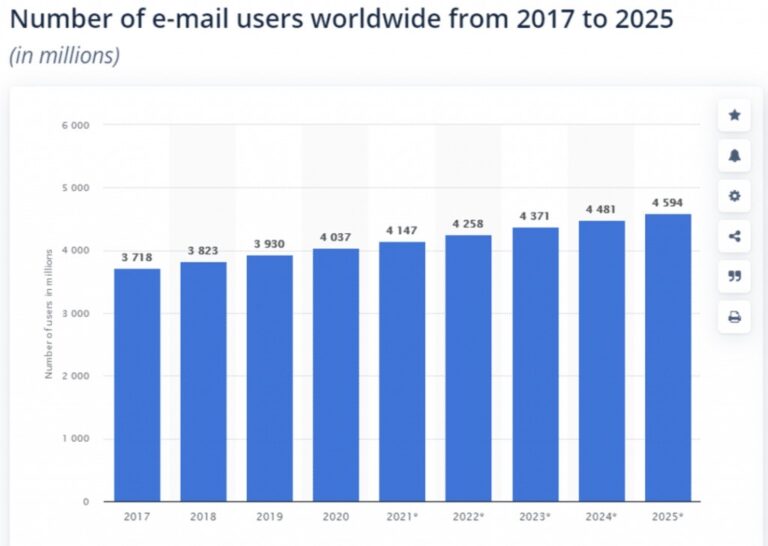
Image Source: Hyperise
Based on the studies conducted by Backlinko, the most successful outreach campaigns reach out to multiple contacts multiple times. Email sequences with various attempts and connections boost response rates by 160%. By the end of 2023, income from email outreach marketing is expected to reach almost 11 billion. In addition, 81% read what other people post about the products, and 63% of adults actively talk about products and services online.
#2. Social Media Outreach
Social media outreach refers to using social media channels to create client relationships, acquire new leads, and start new partnerships – essentially, sell your product or service.
As you know, technology has evolved, social media marketing has become crucial in helping small businesses grow, and it also plays a big part in the continuous success of major companies. Marketers are utilizing outreach in social media platforms to build brand awareness, B2B partnerships and ultimately increase their SEO.
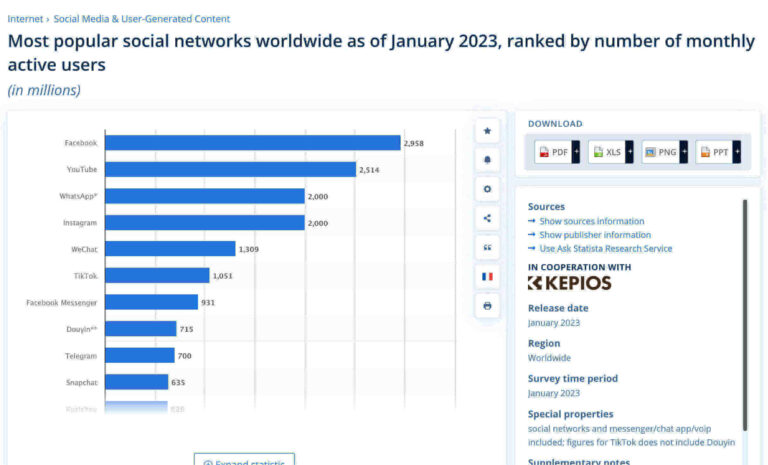
Image Source: Statista
Moreover, consumers continue participating in various ways after following a business on social media. Therefore, social media marketing statistics are crucial to fine-tuning your strategy and setting innovative goals.
The various social media platforms you can utilize are:
-
LinkedIn.
-
Facebook.
-
Twitter.
-
Instagram.
-
Pinterest.
-
TikTok.
How do you expand social media outreach?
Let’s see some tips and ideas to help to build your social media presence and to boost sales.
-
Focus on your target audienceMeet your target audience.
-
Create engaging content.
-
Work with influencers or other brands
-
Make your social media posts reachable
#3. Content Promotion
With the advent of technology, people consume vast amounts of content regularly. If your content is unattractive, your traffic will be low, and you will not get any conversions. So promoting your content is an essential step in outreach marketing.
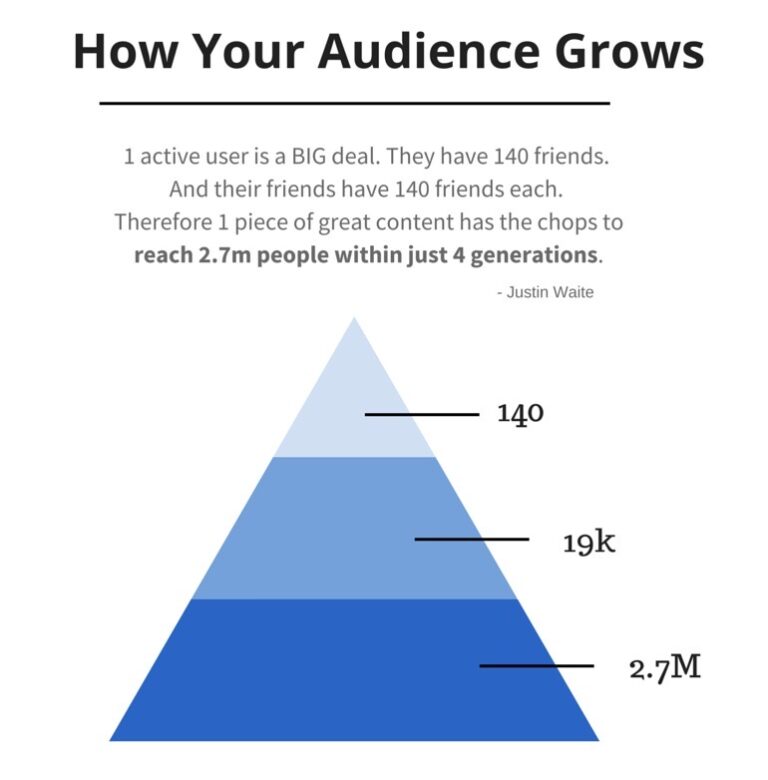
Image Source – Buffer
And also you know there are plenty of platforms that allow you to discuss topics related to your niche. For Example, by joining sites like Quora, you can suggest your content as a resource to answer people’s questions.
Here you have some content promotion strategies you can use to get your brand noticed.
-
Send an email broadcast.
-
Engage with your community.
-
Pay to promote.
-
Reach out on social media.
-
Connect with influencers outside of social.
-
Ask to include your content.
-
Write for others.
Ensure you engage in discussions on the platform so it’s not all about promoting your content.
#4. Influencer Collaboration
Influencer outreach is a process of building relationships with influencers. Technically, it involves sending emails or messages on social media to connect with the right influencer or creator. Invite influencers to test your products & services to advertise them to their audience.
You should be able to get in touch with those with moderate to high levels of success in their field. However, this ensures the content engages, and your Return On Investment (ROI) is unaffected.

Image Source – Statista
According to Statista, ad spending in the Influencer Advertising market is projected to reach US$30.81bn in 2023. Furthermore, the average ad spending per internet user in the Influencer Advertising market is projected to amount to US$5.78 in 2023.
#5. Customer Retention
Customer retention is a huge issue that every industry struggles with regularly. You may lose your customers for various reasons, but ensure you put all your efforts into retaining them.
You can run a personalized customer retention campaign to retain existing customers, including small discounts, offers, and loyalty benefits. Treat your customers like family. It helps when they make decisions about your products and services. A large part of outreach marketing is building trust with your audience. Positive reviews, referrals, and customer success stories can build your authority and improve confidence.
According to a Forbes survey, 74% of respondents make purchases based on their buying experience, and 77% view CX as crucial as product quality. In addition, 65% of businesses have said they plan to increase their spending on customer experience initiatives in 2023.
What Are The Benefits of Using Outreach Marketing?
Building an outreach marketing strategy can bring your business many advantages and benefits.
Let’s jump right into top 10 benefits of using an outreach marketing strategy,
-
Increase your online reputation
-
Create better quality content.
-
Build powerful collaborations and relationships.
-
More personalized approaches to marketing.
-
Boost your SEO rankings.
-
Identify the right influencers.
-
Creates long term relationships with influencers
-
Craft Impactful message lines.
-
Opportunity to build trust quickly
-
Aids content strategy
Drawbacks Of Outreach Marketing
-
It requires the right strategy – a proper outreach marketing strategy to lead you to the set goals.
-
Outreach marketing takes time
-
Outreach marketing may be relatively expensive
But need to learn how to use outreach marketing strategies to boost reach?
Top 4 Outreach Marketing Strategies to Grow Your Business
Every outreach marketing strategy begins with an initial connection to an influencer, then continues to develop and strengthen that relationship using different tactics and techniques to convince your influential source that your brand is worth promoting.
Let us show you how to simply grow your business with the best outreach marketing strategy.
#1. Define Clear Goals And Objectives
You must define your main goals and objectives before taking any other action. It should be flexible and realistic while setting marketing and outreach objectives.
Before you take any action, you should build an outreach marketing plan, which requires a clear understanding of your objectives on the horizon.
Say, you want to get more backlinks to your content or a new audience via social media. Make sure you have a way to measure each objective and remember that goals may need to evolve as your program is implemented.
#2. Choose The Right Target Audience
Now you know your goals and objectives, the next step to building a robust outreach marketing strategy is to choose the right audience.
Finding your target audience is an outreach marketing strategy’s most critical yet challenging part. First, focus on your goals and objectives to choose the right target audience. No matter how perfectly crafted and written your cold message is, if you are not targeting the right audience, your campaign will never be a success.
If you are looking for a less time-consuming process, LinkedIn is one of the best platforms and marketing channels for you to find your leads and the right target audience primarily if you work in tech or B2B Marketing.
#3. Personalize Your Messages
An audience often feels connected to an influencer, blogger, or celebrity, and seeing this person share information about a business may encourage them to seek more information or make a purchase.
By curating the people you contact to optimize their relevance to your brand, you’re personalizing the experience for customers who encounter the content they create.
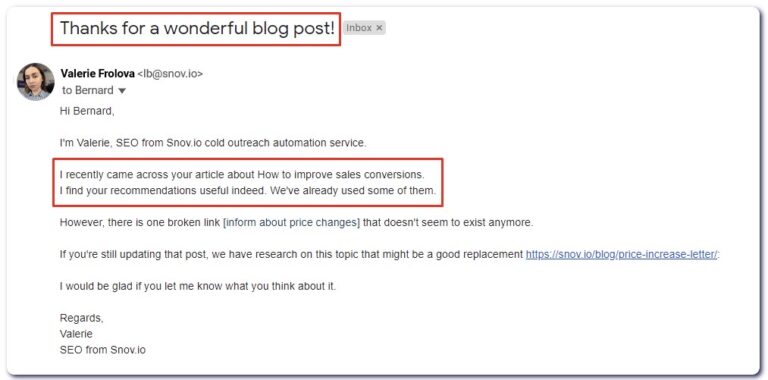
Image Source – Snov.io
Personalization in outreach marketing is about more than addressing people by name. Instead, it presupposes thorough research aimed at getting to know your potential influencer and offering them something of value.
#4. Focus On Building Relationships
An audience often feels connected to an influencer, blogger, or celebrity, and seeing this person share information about a business may encourage them to seek more information or make a purchase.
By curating the people you contact to optimize their relevance to your brand, you’re personalizing the experience for customers who encounter the content they create. Try to build relationships with people instead of just trying to make links or get online mentions.
According to research by Backlinko, replies to outreach emails can be increased by up to 65.8% with just a single additional follow-up.
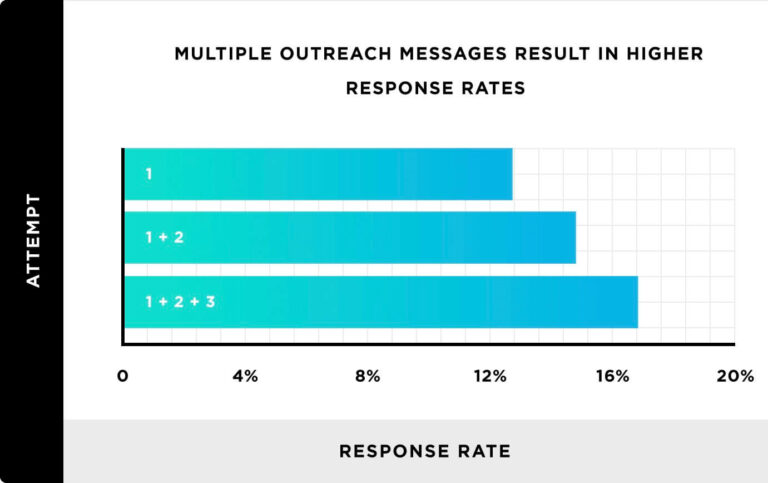
Image Source – Backlinko
How to Evaluate the Impact of Your Outreach Marketing Strategy
To evaluate your program’s marketing and outreach efforts, you must first identify the key metrics to measure progress toward achieving goals and objectives. Measuring the impact of your outbound channels across your entire marketing program takes time.
However, the strategies you used in your outreach work, assess their effectiveness, and refine future efforts. Unfortunately, one of the most common mistakes brands make is expecting outreach marketing to deliver quickly.
Now let’s see some tips for measuring the effectiveness of your campaigns and outreach,
#1. By Measuring KPIs (Key Performance Indicators)
A Key Performance Indicator (KPI) is a quantifiable metric that reflects how well an organization achieves its stated goals and objectives.
These KPIs should be channel-specific, that is, social media engagement, suitable for measuring a tactic.
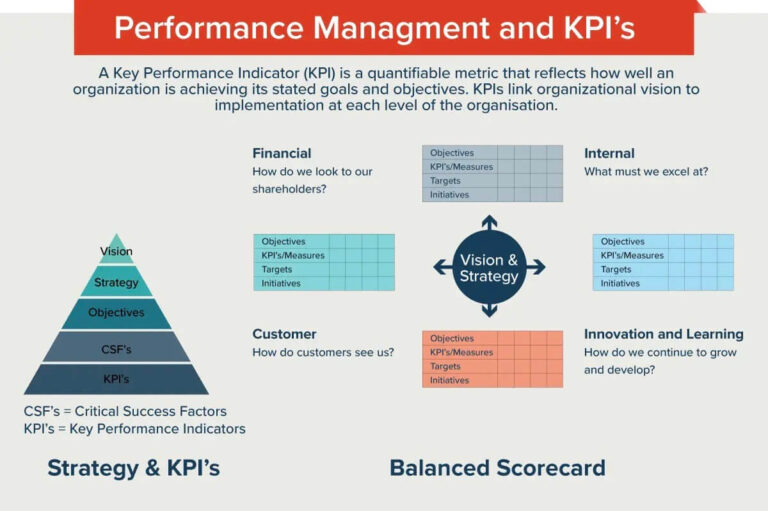
Image Source : Garyfox
Whatever the nature of your KPIs, you need to make sure they’re SMART i.e.,
-
Specific: Clear what each KPI will measure and why it’s crucial.
-
Measurable: The KPI must be measurable.
-
Achievable: Must be able to deliver on the KPI.
-
Relevant: KPI must measure something that matters and improves performance.
-
Time-Bound: it’s possible within an agreed time frame.
There are different indicators of performance that an organization can measure, and most fall under two categories:
Quantitative KPIs
Quantitative KPIs measure data numerically, such as sales figures or website traffic; they are often used to track progress toward specific numerical targets and are easily measurable and comparable.
Qualitative KPIs
Qualitative KPIs measure non-numerical data and explain characteristics or subjective interpretations of a person’s opinions. Qualitative KPIs are typically based on qualitative data and are not calculated numerically.
For Example, If a company just released a new product online and as soon as the product listing goes live, they will track quantitative metrics such as,
-
Customer satisfaction levels
-
Product sales
-
Employee engagement
-
Quality of customer service
-
Brand perception
-
Customer loyalty
KPIs offer a productive way to measure and track a company’s performance on various metrics by understanding precisely what KPIs are and how to implement them correctly. Also able to optimize the business for long-term success.
#2. Testing Various Stages of Outreach
Testing at various stages during your program’s lifecycle is essential for continued success. Outreach also provides a real-time opportunity for testing and optimization by putting out relevant iterations of messaging on various platforms.
For Example,
A/B testing is the easiest way to test changes in your messaging against each other and determine which emails/Templates produce the most positive results.
In addition, it is a method to validate that any new template or design to an email in your sequence improves your open rate, click rate, or reply rate before you make that template the permanent option.
#3. Collect and Analyze Data
How will you collect and analyze data to measure your indicators and assess your outcomes?
Many evaluation methods and tools are available, ranging from surveys and interviews to focus groups. You should choose the methods and tools that best suit your context, budget, and capacity and that can provide reliable and valid data.
Some examples of collecting and analyzing data using tools and methods:
-
Website measurement: Google Analytics and Digital Analytics Program (DAP).
-
Social media growth: Native analytics within the social media platforms.
-
User engagement: social media management and monitoring tools.
Email marketing measurement: reporting tools to streamline and analyze external outreach. -
Plug-ins or extensions for internal email programs: to create mobile-friendly, responsive design emails and measure engagement.
#4. Socialize and Build Support For Your Organization
Create a culture of telling stories to get stakeholder’s buy-in, such as a one-page snapshot of results like views, shares, and followers. You must show a week-over-week or a month-over-month progression based on program length.
It builds credibility for you, your team, and your strategies but also gives senior leadership sound bites to socialize, making support for your organization.
It would help if you also used your findings to celebrate your achievements, identify your challenges, and plan your next steps. You should also reflect on your evaluation process and learn from your successes and failures.
Wrapping Up:
Outreach marketing, with its best strategies, help you build relationships with influential people and organizations and can go on to promote your brand, services, products, and business to their audiences. Follow the above outreach marketing strategies to get more qualified leads, improve brand awareness and visibility, and boost sales. Suppose you are new to B2B SaaS content marketing or have numerous unanswered questions about outreach marketing strategies. Are you Looking for an expert outreach marketing service for your SaaS business? We want to help you get started and answer all your questions. You can reach us by booking a free consultation and talking to an expert today!

